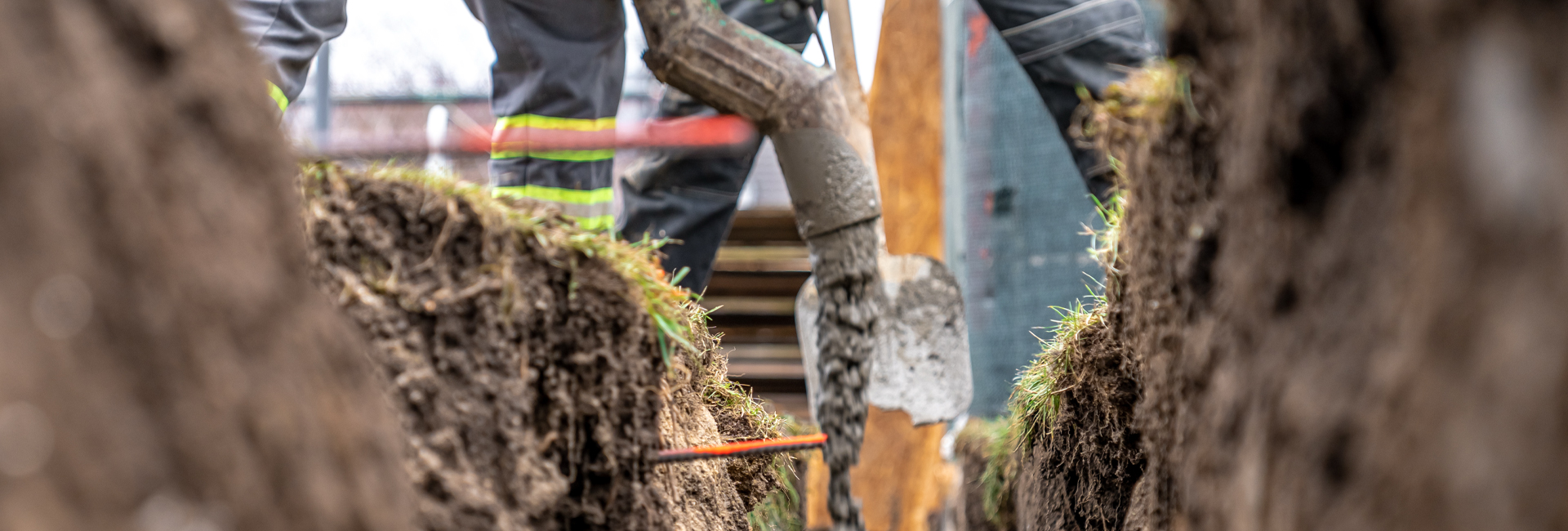Footings play a crucial role in building construction, serving as the primary structural element used to distribute the building's load to the ground. They are the foundation of a structure, providing it with modern engineering feats, safety, stability, as well as strength. Selecting an appropriate type of footing is extremely important considering soil type, building load, and environmental factors, among others.
In this article, we will discuss what footings are, the various types of footings in construction, their use cases, and their benefits.
What Are Footings
Footings are structural elements in construction that serve as the base of a building’s foundation. Their primary purpose is to distribute the weight of the structure evenly to the soil below, ensuring stability and preventing uneven settling or collapse. Footings are typically made of reinforced concrete and are placed beneath columns, walls, or other load-bearing elements.
Types Of Footings
Let’s have a look at different types of footings.
1. Isolated Footings
Isolated footings, also known as pad footings, are one of the most popular types of footings utilised in residential structures and light buildings. These types of footings support one single column of a building, and are mostly square and rectangular or circular.
When to Use:
- When the column spacing is not close
- Where the loads are from low to moderate
- The soil bearing capacity is good.
Benefits:
- Easy to design and construct
- Economical
- Individual columns and lightweight structures can be made with ease.
2. Combined Footings
A combined footing supports 2 or more columns if they are sufficiently close such that each one’s individual footing will overlap. These are either rectangular or trapezoidal.
When to Use:
- If columns are close to the property line and individual footings cannot be used due to the constraints of the building shape.
- If uneven column loads need to be balanced
- Construction space is limited.
Benefits:
- Effective and efficient in balancing column loads.
- Space saving
- Comparing these footings to isolated footings, combined footings offer superior load redistribution in compact spaces.
3. Strip Footings
Strip footing foundations are continuous strips of concrete that support a line of columns or a row of load-bearing walls.
When to Use:
- For brick and traditional masonry buildings
- For load-bearing walls
- When the soil has adequate bearing capacity.
Benefits:
- Simplified construction
- Works well for low-rise constructions
- Load distributed along a linear path
4. Raft or Mat Footings
A mat foundation, or raft footing, is a large slab that encompasses the full footprint of a building and supports multiple walls and columns, dispersing their load regionally.
When to use
- If located on weak or loose soil
- If under heavy structural loads
- If concerned with differential settlement
Benefits
- Minimises differential settlement
- Efficient in poor soil conditions
- Distributes load uniformly
Drawback
- Incurs more spending due to high volumes of concrete and steel used.
5. Pile Foundations
Pile footings are composed of slender columns that are driven deep into the soil until they reach stable rock or soil layers.
When to Use:
- If the topsoil is of low quality and weak
- With the superstructure of bridges, high-rise buildings, or towers
- In areas where the groundwater level is at the surface
Types of Piles:
- Bored piles
- Friction piles
- Driven piles
- End-bearing piles
Benefits:
- Effective in supplying aid in shifting soils
- Effective in regions prone to inundation or earthquakes
- Settlement is minimised
6. Strap Footings (Cantilever Footings)
Cantilever footings are also called combination footings since they comprise 2 or more separate footings that are linked together by a strap beam instead of a single large slab.
When to Use:
- If a column is placed close to the boundary wall and cannot be positioned in the middle
- To counteract unequally distributed loads from columns
Benefits:
- Best where the plot boundaries are confined
- Significant savings if used appropriately
- The reduction of soil pressure within the soil is maintained
7. Sloped footings
The appearance of sloped footings is that of a pyramid since they taper outwards from the face of the column. Compared to a block-type footing, this type consumes less concrete.
When to Use:
- For use in buildings of moderate load
- For preference, whether economic or architectural
- Generally, in isolated footing design
Benefits:
- Reduces concrete use
- Good visual appearance
- Flexible design and easy to shape and mould on site
8. Grillage Footings
Grillage Footings refers to this class of footings consisting of two or more tiers or layers of beams of timber or steel encased in concrete and used for heavy loads over weak soil.
When to Use:
- In case of heavy structural columns
- Where high bearing capacity is needed but not available at shallow depth
- Under industrial and infrastructural works
Benefits:
- Capable of bearing a high load
- Efficient in load dispersion
- Lowers the depth of excavation
9. Wall Footings
Wall footings or strip footings for walls are shallow, a type of foundation situated below the load-carrying walls.
When to Use:
- For use in residential structures containing load-bearing walls
- Where the soil is stable and the load is evenly distributed vertically(linearly)
Benefits:
- Low priced
- Simple construction
- Reduced details in the design
Factors Influencing the Choice of Footing
The following considerations are relevant to choosing a type of footing, considering your engineering, economic, and environmental needs:
- Soil Type:The soil type determines bearing capacity, and so determines depth and type of footing.
- Load of Structure: The construction of heavier buildings necessitates the use of deeper or more complex footings, such as pile or mat foundations.
- Building Type: Heavy industrial buildings, as well as high-rise structures, bridges, and other structures, require differential footing techniques compared to small residential homes.
- Water Table: Soils with high water tables, and especially in shallow foundations, can influence the footings design.
- Seismic Conditions: Regions prone to earthquakes typically have a requirement for the use of deep footings or specially reinforced structures.
Also read: Concrete Vs. Sariya: What Makes A Structure Strong
Importance of Proper Footing in Construction
Footings are one of the aspects of a construction project that determine its success in terms of safety and durability. Poor footings are without a doubt subject to uneven settlement, cracks, and even total structural failure. Every construction project requires a comprehensive analysis of the soil, a well-thought-out design, and meticulous execution of the engineering design.
Some of the primary functions of the footings are:
- Allocating the load of the building to the base.
- Properly managing differential settlement.
- Maintain stability within the structure.
- Increase the lifespan of a structure.
Conclusion
An accurate brace begins with selecting the proper type of footing. It could range from an isolated footing for a single-story house or a pile foundation for a multi-story building. Everything in the design should align with the required structures and the area's geological features. Knowing the types of footings available can help make better choices for safety, durability, and efficiency for the architects, engineers, and builders.
A good construction plan balances reality, in which a foundation goes beyond being only a footprint of a structure, but also nurtures the burgeoning complexities of modern architecture and engineering.
For more information, please reach out to us at: Sales@sreemetaliks.com

